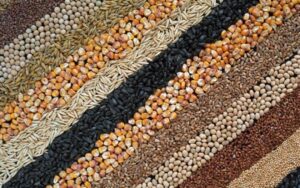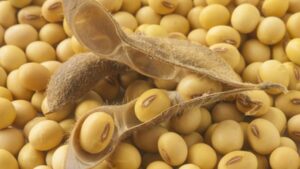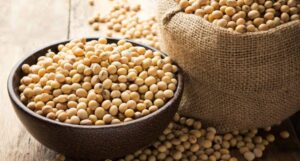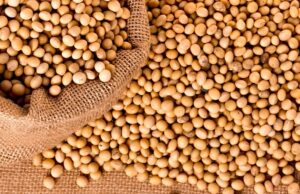
Today, June 12, the Council of the European Union recognized the equivalence of Ukrainian standards for the production of beet, sunflower, rapeseed, and soybean seeds with European requirements, according to the press service of the Council of the EU.
According to this decision, seeds of these crops produced in Ukraine will be able to enter the EU market. This means that EU-based companies will be able to diversify their seed production areas. The new rules will also help to maintain a continuous supply of high-quality seeds to the EU.
“The decision grants equivalence to beet, sunflower, turnip, and soybean seeds produced and certified in Ukraine, fodder plant seeds produced in the Republic of Moldova and officially certified by its authorities, as well as to the corresponding field inspections carried out. The equivalence confirms that the national procedures of the two countries offer the same guarantees regarding seed characteristics and rules for seed examination, identification, and control as those applicable to seeds harvested in the EU,” the statement said.
Moldova has received similar permission for fodder plant seeds.
The decision will enter into force 20 days after its publication in the Official Journal of the EU.

In the period from 2022 to January-March 2025, Moldova imported 99.22% of soybeans from Ukraine, which supplied 56.64 thsd tonnes of the total imports of 57.08 thsd tonnes, according to the Moldovan online resource agroexpert.md.
According to the report, the total trade turnover for the analyzed period amounted to 71.42 thsd tonnes, including 79.9% of imports and 20.1% of exports of domestic beans.
Ukraine was the leader in the supply of soybeans throughout the analyzed period. In 2022, it accounted for 99.99% of imports (14.84 thsd tonnes), in 2023 – 97.19% (10.08 thsd tonnes), in 2024 – 99.50% (30.20 thsd tonnes), and in the first quarter of 2025 – 9%.
Other importing countries had a much smaller share. Thus, Germany ranked second with a share of 0.39% of total imports (0.22 thousand tons), with all imports from this country in 2023. Romania is on the third place with the share of 0.26% (0.15 thsd tonnes), the main volume of imports from this country was in 2024.
At the same time, Moldova exported soybeans to 10 countries in 2022-January-March 2025 and totaled 14.34 thsd tonnes.

In Ukraine, the domestic processing of soybeans continues to demonstrate the high rates, in particular, in February 2025 the country processed the absolute monthly maximum of 320-330 thsd tonnes of soybeans, up 27% compared to January of the current year, APK-Inform news agency reported.
The analysts noted that in 2024/25 marketing year (MY, September-February) Ukraine processed the record almost 1.45 mln tonnes, up 57% compared to the same period last season and 43% compared to the previous high of 1 mln tonnes in the first half of 2019/20 season.
“Such a significant increase is primarily due to the fact that large mills started processing soybeans due to difficulties with sunflower procurement. However, the active export of soybean meal against the background of the attractive price for importers contributes to the high processing rates for several months in a row,” the experts explained.
APK-Inform forecasts that in total, in the season-2024/25 Ukraine can process up to 2.2-2.3 mln tonnes of soybeans, which is about 36% of the total supply of the crop, compared to 33-35% in the previous two seasons. At the same time, the share of soybean exports, despite the increase in physical terms, may decline to 57% in MY compared to 58-60% in previous seasons.
Prospects for soybean processing in the second half of the current season look a bit pessimistic, analysts say.
The world market expects a record soybean harvest in South America, increased processing in Argentina and increased supply in the soybean meal sector, the balance of which has been overloaded in the last few seasons. Increased tensions in trade relations between the US and the EU, as well as tariffs imposed in the soybean sector by China, may contribute to the continued high demand in the foreign market for Ukrainian raw materials, which encourages traders to increase sales of raw materials that will not be processed, the analytical agency explained.

As of February 10, Ukraine exported 78 thsd tonnes of soybeans, its reserves are estimated at 3.4 mln tonnes, which is significantly higher than the previous season, when they amounted to 2.6-2.7 mln tonnes, according to the analytical cooperative “Pusk”, created within the framework of the All-Ukrainian Agrarian Council (AAC).
According to analysts, the situation indicates the need to intensify sales in February-April, as in May-June traders will focus on the new harvest of grain and rapeseed.
“We have enough soybeans, and it is too early to worry. However, the demand may decrease closer to spring, which will affect prices. Therefore, it is important to take this factor into account and plan sales accordingly,” they said.
The experts reminded that the situation on the global market also affects Ukrainian exports. In Brazil, harvesting is delayed due to high soybean moisture, which leads to significant losses in the fields. This could change global balances and support prices. In addition, the market is waiting for the updated USDA report, which may adjust the forecasts for production in South America.
“If the crop losses in Brazil and Argentina are confirmed, this could be an additional factor in price growth. Already, the seasonal model shows that in late February and early March we may see the level of $400-405 per ton on a CPT basis, and potentially even $410-415 per ton,” analysts predict.
According to their information, the prices for soybeans on the domestic market of Ukraine are currently stable and amount to $388-393 per ton in ports, 17 500-17 700 UAH/ton at processors.
At the same time, the main restraining factor is the weak soybean meal market, which is why processors cannot actively compete with exporters.
In the coming months, according to analysts, some traders may try to increase margins, especially in May-June, when the focus will shift to the new harvest. “We have already seen similar situations in the market, so it is important to be prepared for possible price fluctuations,” Pusk summarized.

Despite the seasonal decline in global market activity during the holiday season, Ukrainian soybean exporters are maintaining their positions, according to the analytical cooperative Pusk, created within the framework of the All-Ukrainian Agrarian Council.
“Despite the difficult economic situation in China, which may reduce soybean imports to 95-100 mln tons, the market is stable. Since August last year, prices on the stock exchange have remained stable, and short-term drops are quickly compensated for. This suggests that the exchange market is currently ignoring global challenges. Of course, high global stocks create uncertainties, but the trend toward price recovery continues. Ukrainian soybean exporters can use this period to strengthen their positions,” the analysts said.
They noted that historically, January, February and March show the upward trend of soybean prices. In this regard, they predict an increase in soybean prices in Ukraine by the end of January.
“We are already seeing an increase in prices: in the domestic market, they have risen by 200-300 UAH/ton, and in foreign currency terms, by $3-5/ton. We can predict that conditional prices on the CPT basis will amount to $400-410/ton in January, and in February-March they will even exceed this level. This is a favorable period for farmers who plan to sell their products,” Pusk summarized.

Ukraine is expected to increase soybean production in 2024.
“Ukroliaprom” estimates the soybean harvest in the season-2024 at 6.1 million tons, which is 28% more than a year earlier. The association attributes such growth to a significant increase in production areas – by 46.6% to 2.66m hectares.